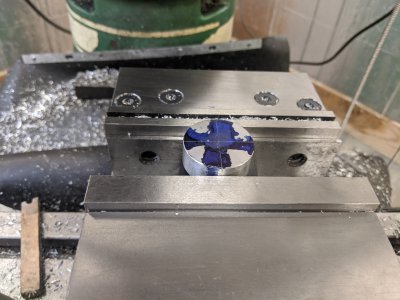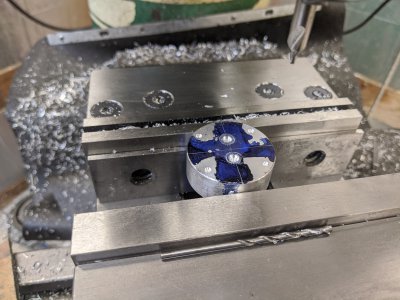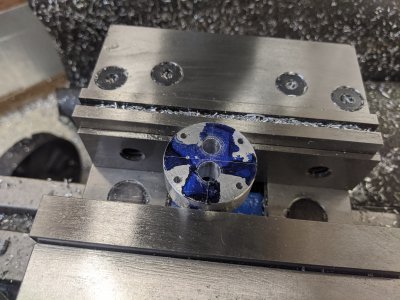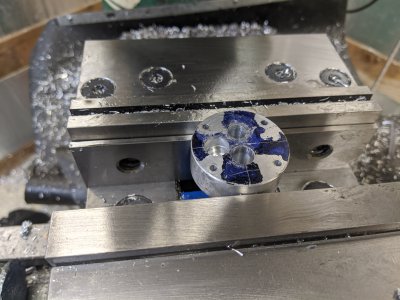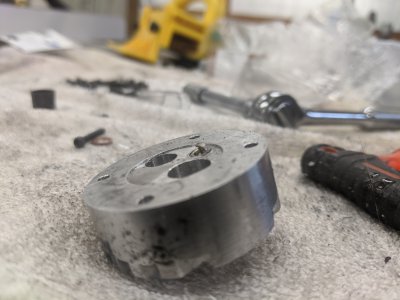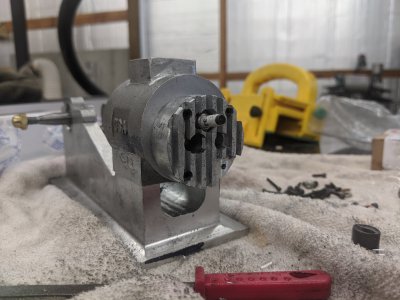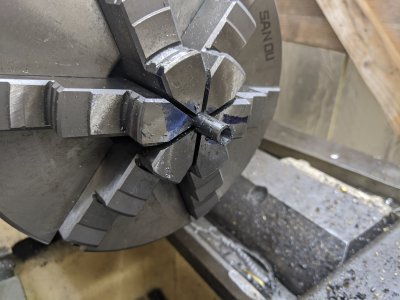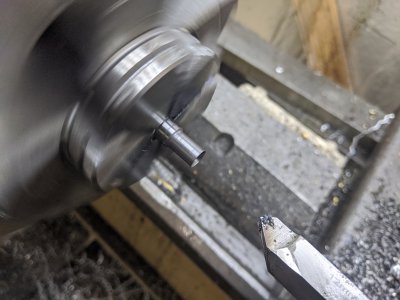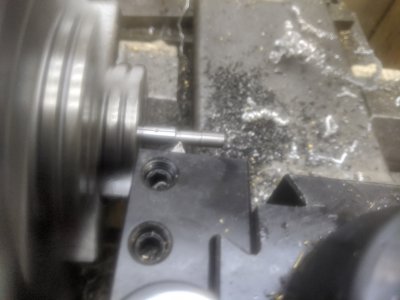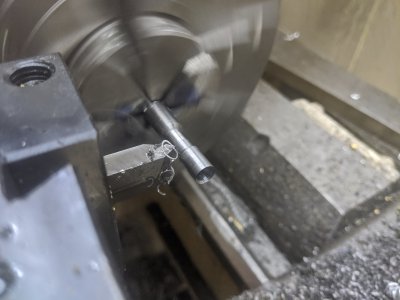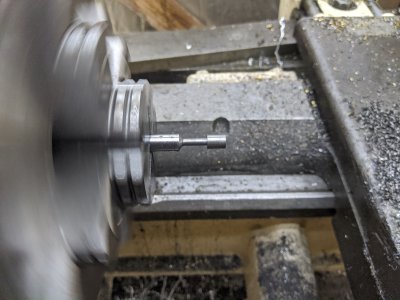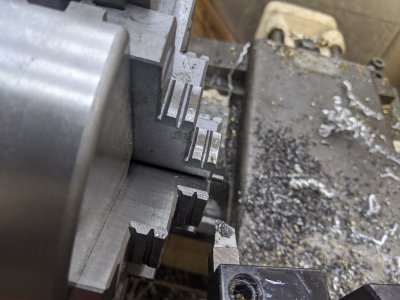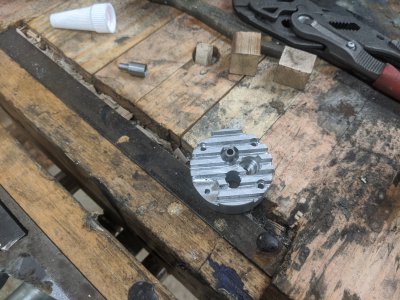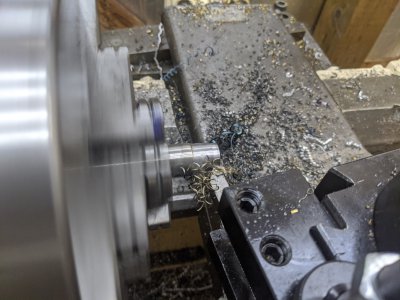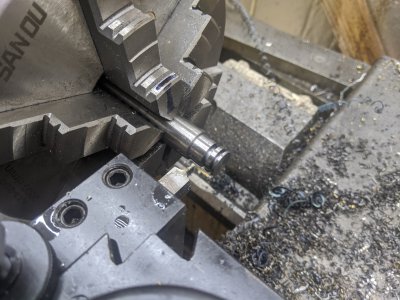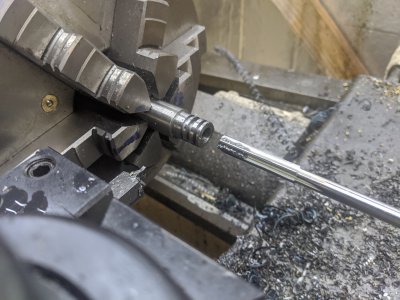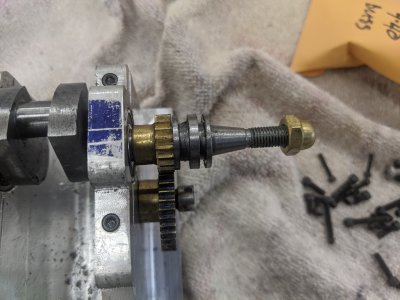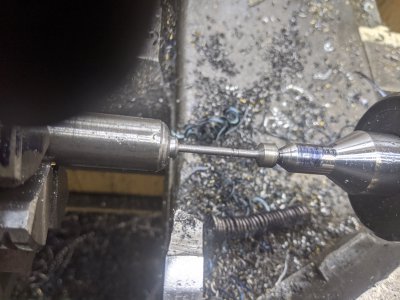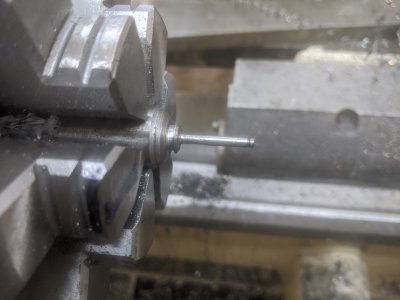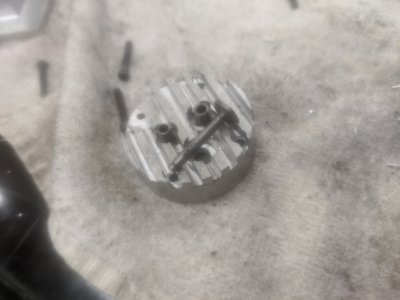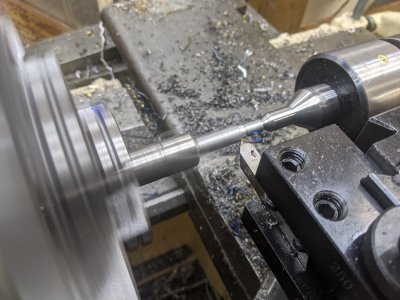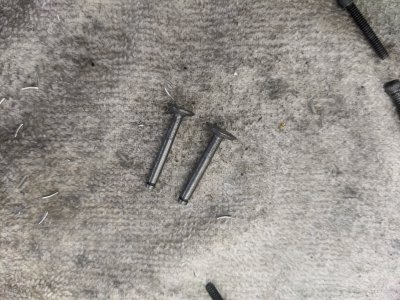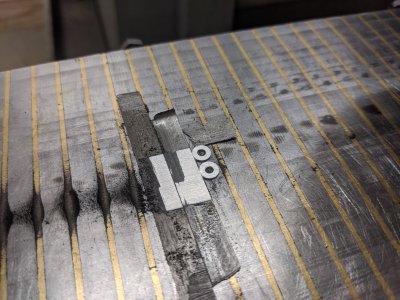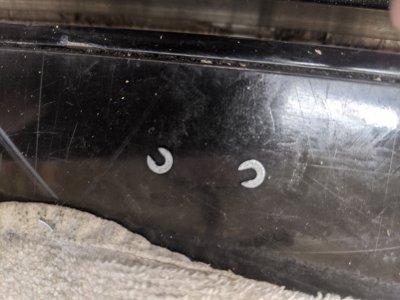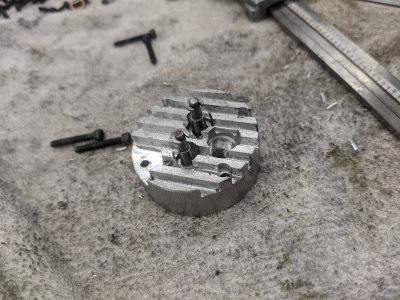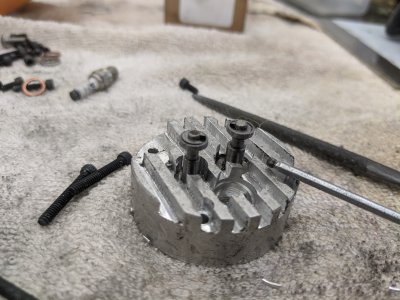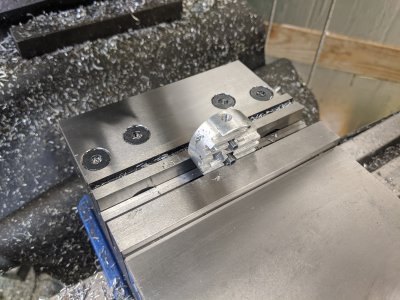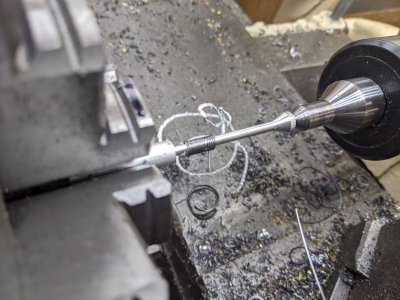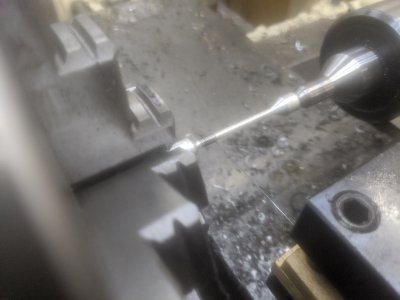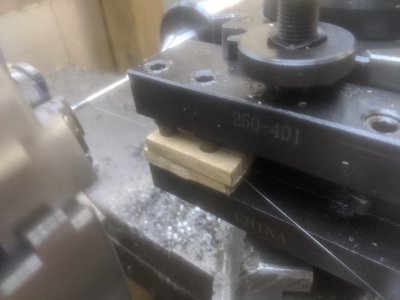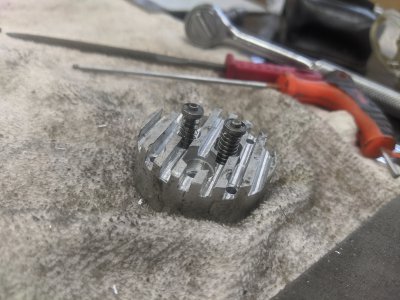I started the head today (and got through the head aluminum itself!) but I think I messed 2 things up sufficiently that I'll have to re-do it. Anyone building, this is a BIG lessons learned, so pay attention so you don't do your head twice!
Though this is likely usable, I have a couple of things that I would like to do better next time, so I'm going to do it again. I'll share the build log anyway, as it'll give me a chance to point out the mistakes!
FIRST, I turned a piece of 2" aluminum down to the correct OD. Then, cut it off on the bandsaw, flipped it around, faced it to length, then made the little 'indent'. The indent doesn't have a specified depth, so I guessed here. I think I ended up with about 30 thou. The piston is only going to get within 145 thou of the top of the cylinder, so presumably this is sufficient to not interfere.
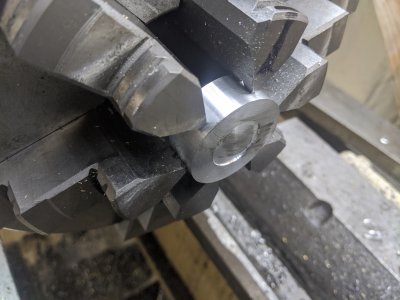
I marked 2 axes as reference, then cut the valve liners from the 'top'. The plans have everything dimensioned from the OTHER side, but that seemed wrong. In retrospect, I don't think it mattered other than getting the straight lines struck.
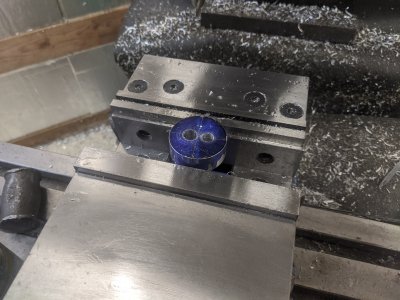
Here is my first 'dummy' move. First, I didn't cut the mounting holes in the previous step, so I cost myself a setup. Second, I setup to drill/tap for the carburetor and exhaust. (I used 5/16-18 instead of 5/16-20 for the exhaust, it seemed like a meaningless change). The problem is that these holes need to go through the liners as well, so I'll have to drill those when I press in the liners! However, I'm not terribly confident in being able to setup these right again.
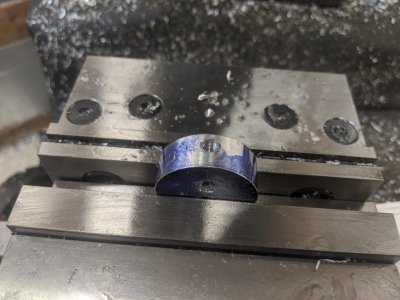
Here I am drilling the mounting holes, just a wasted setup, otherwise not a problem.
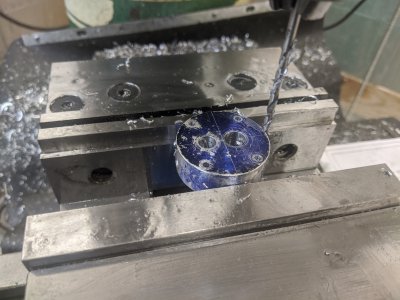
Next, I had to drill the spark plug hole. The dimensions tell you where it goes from the other side, and since it is at a 10 degree angle, it took a little trig to get right. It wasn't a big deal. You tap it 1/4-32 for the spark plug.
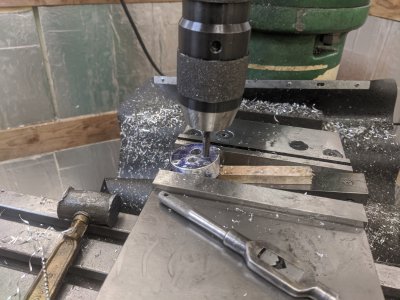
However, here is where I got in trouble. First, I drilled the counter-bore too deep. I ended up having to get a pair of larger copper washers in order to prevent this from interfering later. Second, the counterbore specified is too small for the 'nut' part of my spark plug. ON TOP OF THAT, it is in fact way too small to use a socket on it! I ended up later counterboring in a separate setup to 1/2" so I could get a socket in there, but it ended up just interfering with the exhaust liner. I think it would have been OK, but the result would have been the wrench not working anyway. I have to figure out a way to counterbore less than 1/2", but do so enough that a socket can tighten the nut. I might counterbore with a drill bit little for THAT (something closer to .450 that the outside of my 8mm socket is, AND maybe grind down the outside of one to be quite a bit smaller!).
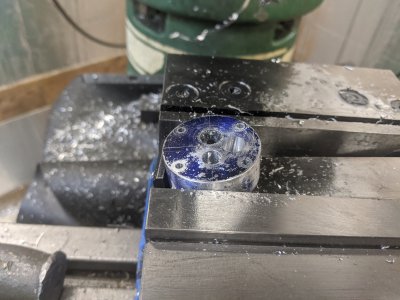
I used a 1/8" endmill here, as I didn't have something closer to the 100 thou. I still stepped over 100 thou, and like how this part turned out.
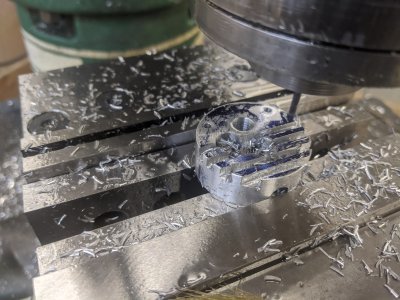
Here it is installed. I counter bored for the bolts as well (good idea!) and a big spot in the lower right (also a good idea) since a washer is going to go there and be held down by a nut. I'll likely do that again.
You can see the lower left of the spark plug getting into the spot for the valve liner.
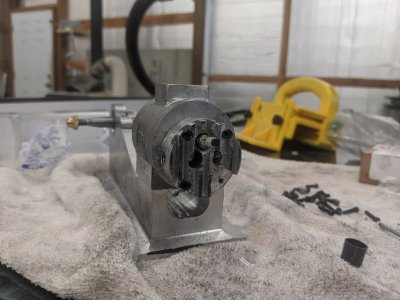
I'm going to try next time making the valve liners FIRST, so that I can press them in and drill them together. I'm also going to be a little more careful about the spark plug socket and see if I have a cheap one I can easily grind down to be closer to a more managable diameter. I'll also be more careful about the depth, perhaps once I can test it with the socket relief, I'll have a better idea of the depth.










